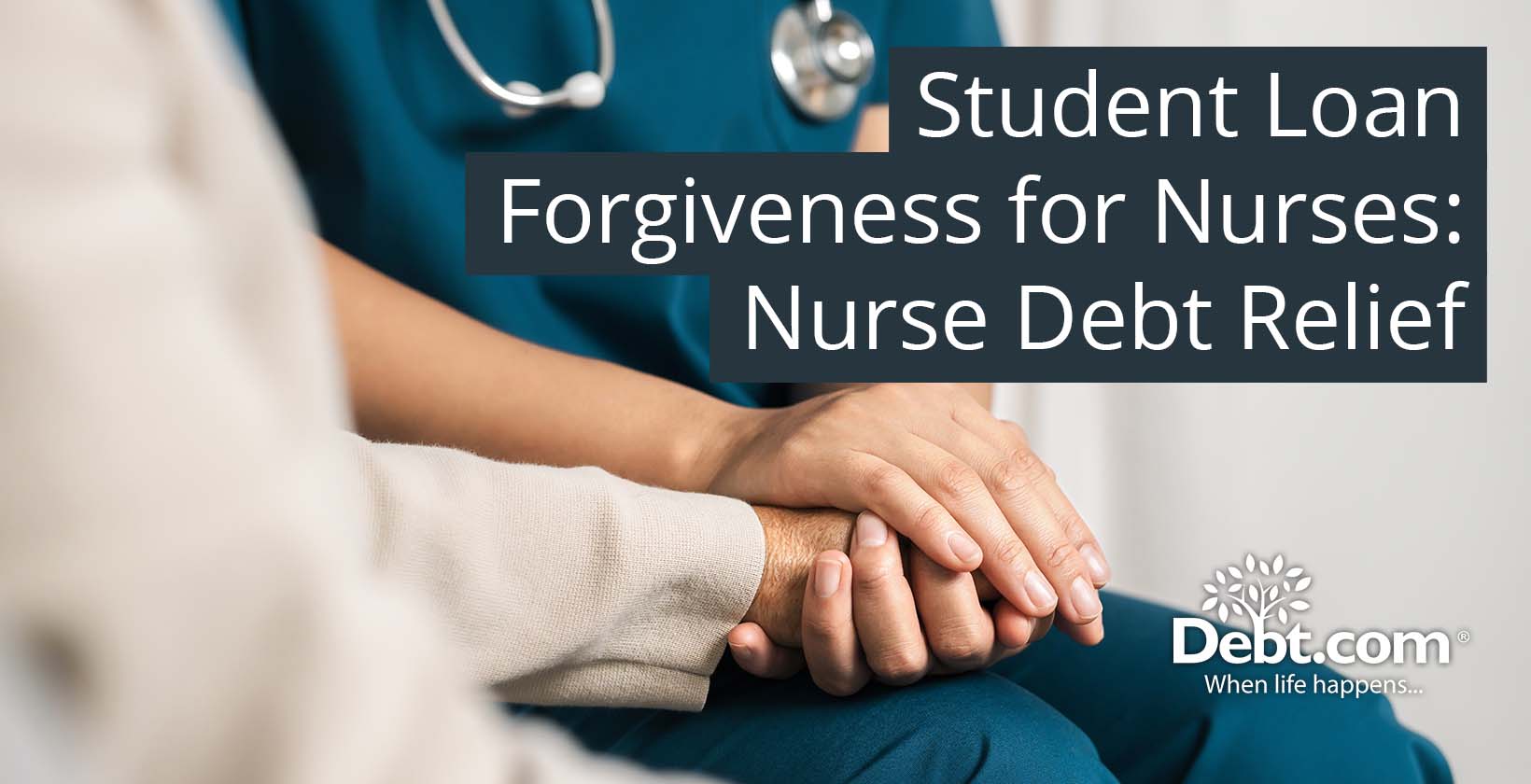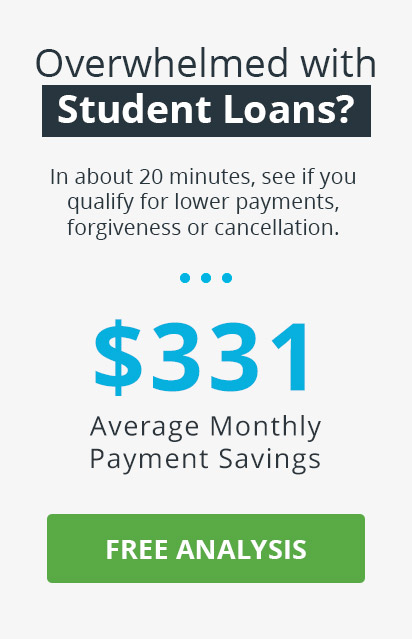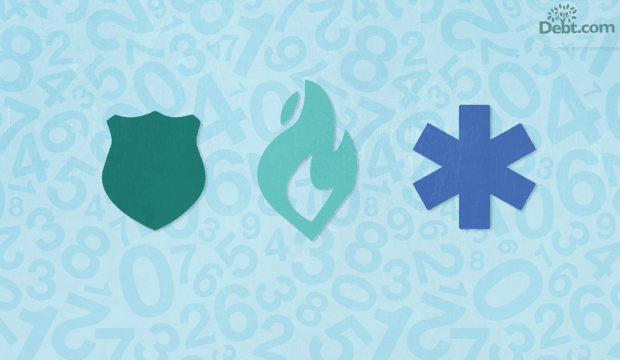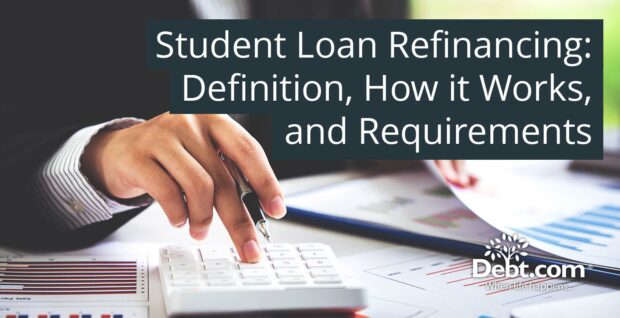
Student loan forgiveness for nurses alleviates the financial burdens associated with nursing education. Nurses have several pathways to achieve loan forgiveness, such as the Public Service Loan Forgiveness (PSLF) program, which forgives federal student loans after 120 qualifying payments while working in public service roles, including at nonprofit hospitals or government agencies. Income-driven repayment plans (IDR) offer another route for nurse student loan forgiveness, capping monthly payments based on income and forgiving the remaining balance after 20 to 25 years of repayment.
Nurses must ensure they have the correct type of loans and maintain meticulous records of their payments to benefit from these programs. They must take advantage of loan forgiveness for nurses programs, which reduce their debt and allow them to focus on their critical roles in healthcare by understanding how to get loans forgiven.
Student Loan Forgiveness for Nurses offers financial relief by reducing or eliminating outstanding student loan debt. It enables nurses to focus on their careers without the burden of heavy loan repayments. These programs incentivize employment in underserved or high-need areas, improving healthcare access in such regions. Nurses have the opportunity to invest in further education, retirement savings, or other personal and professional goals, ultimately enhancing job satisfaction and retention in healthcare by alleviating financial stress.
Table of Contents
What is a Student Loan Forgiveness for Nurses?
Student Loan Forgiveness for Nurses refers to various programs intended to reduce or eliminate the student loan debt of nurses. The “nurse student loan forgiveness” programs require nurses to work in specific settings or meet certain criteria, such as working in underserved or rural areas, for nonprofit organizations, or in public health sectors. The primary goal of “nurse debt relief” is to alleviate the financial burden of nursing education, motivate nurses to work in high-need areas, and support the healthcare system by retaining skilled professionals in critical positions. Examples of these programs include Public Service Loan Forgiveness (PSLF), Nurse Corps Loan Repayment Program, and state-sponsored loan forgiveness initiatives. The enrolled nurses have a portion or all of their debt forgiven after meeting the required service commitments through these nursing student loan forgiveness programs.
What are the Eligibility Requirements for Student Loan Forgiveness for Nurses?
The eligibility requirements for nurse student loan forgiveness are listed below.
- Full-Time Employment: Full-time employment is required for nurse student loan remission. It requires 32 hours of eligible labor per week. Schemes allow part-time work with fewer benefits than full-time. The requirement ensures that nurses devote much of their professional efforts to critical or underrepresented roles. Exceptions and definitions of full-time employment vary in every program, so applicants must check the requirements.
- Qualified Employer: Employees must work for government agencies, non-profits, or hospitals in medically underserved or HPSA areas.
- Specific Roles: Specific roles are crucial eligibility requirements for various student loan forgiveness programs for nurses, ensuring they provide essential healthcare services in underserved or high-need areas. Programs like Public Service Loan Forgiveness (PSLF) include roles such as Registered Nurses (RNs), Nurse Practitioners (NPs), and Clinical Nurse Specialists (CNSs) in public service positions.
- Minimum Service Period: Full-time employment requires working at least 32 hours per week. Programs permit part-time work but with reduced benefits.
- Underserved Areas: State programs mandate service in underserved or rural areas to qualify for loan forgiveness. Service in underserved areas helps ensure that vulnerable populations receive adequate healthcare, addressing disparities in access and improving public health outcomes.
- Accredited Programs: Many nursing student loan forgiveness programs need accredited programs to verify education. For instance, PSLF requires nurses to have graduated from approved programs. The work must be for government or 501(c)(3) non-profits.
- Licensure: Nurses must hold a valid and current license to practice in their respective states to qualify for loan forgiveness programs. It ensures they are legally authorized to provide healthcare services, a condition for employment, and participation in loan forgiveness programs.
- Qualifying Loans: There are specific types of qualifying loans for nurse student loan forgiveness programs, focusing on federal student loans. Qualifying loans include Direct Loans such as Direct Subsidized, Direct Unsubsidized, Direct PLUS, and Direct Consolidation Loans for Public Service Loan Forgiveness (PSLF). Income-Driven Repayment (IDR) Forgiveness applies to federal loans eligible for IDR plans, including Direct Loans, FFEL Program loans, and Perkins Loans if consolidated. The Nurse Corps Loan Repayment Program accepts federal and private student loans for nursing education. State-specific loan forgiveness programs cover federal student loans and sometimes private loans as specified by the program.
- Good Standing: The borrower must not default on their federal student loans. Borrowers are excluded from forgiveness programs when they default on their loans. Borrowers in default must either consolidate or rehabilitate their loans to regain eligibility.
- Income-Driven Repayment Plans: Payments made under the standard 10-year repayment plan qualify, but because the goal is to have a remaining balance forgiven after ten years, borrowers are expected to have paid off their loans within that period. IDR plans keep monthly payments lower based on income and family size, ensuring that there is a remaining balance to be forgiven after 120 qualifying payments.
- Qualifying Payments: Nurse student loan forgiveness programs demand qualifying payments. Nurses must make 120 qualifying monthly payments under a qualifying repayment plan while working full-time for a qualifying employer under the Public Service Loan Forgiveness (PSLF) program. These payments need not be sequential but must be timely and complete. Other loan forgiveness programs need nurses to make a certain amount of payments.
- Application Process: Applicants must comply with the specific application process for each program, including employment documentation, loan details, and proof of service.
- Documentation: Verify qualifying employment by submitting the Employment Certification Form annually or upon any change in employer.
How does Loan Forgiveness for Nurses Differ from Other Healthcare Workers?
Loan forgiveness for nurses differs from other healthcare workers because it includes specialized programs tailored to the nursing profession. Programs like the Nurse Corps Loan Repayment Program and various state-sponsored forgiveness options are designed exclusively for nurses, offering significant debt relief in exchange for service in high-need areas or educational institutions. The Nursing-specific repayment plan for student loan programs has distinct eligibility criteria, such as working in critical shortage facilities or as faculty in nursing schools.
General healthcare loan forgiveness programs, like the Public Service Loan Forgiveness (PSLF), are available to a broader range of healthcare professionals, including doctors and physician assistants, but do not offer the targeted support found in nursing-specific programs. Nurses utilize unique opportunities through state-level initiatives and national programs administered by the Health Resources and Services Administration (HRSA), which are not always available to other healthcare roles.
What are the Top Programs for Nurse Student Loan Forgiveness?
The top programs for nurse student loan forgiveness are listed below.
- Nurse Corps Loan Repayment Program (Nurse Corps LRP): The Nurse Corps Loan Repayment Program, ideal for nurses or nursing faculty in critical demand areas, offers up to 85% forgiveness of unpaid nursing education debt. Licensed registered nurses, advanced practice registered nurses, and faculty members working full-time in high-need areas or accredited nursing schools must apply. Eligible participants receive 60% debt forgiveness over a two-year service contract, with the prospect of an additional 25% forgiveness in a third year. Application instructions are available on the Health Resources and Services Administration website.
- Public Service Loan Forgiveness (PSLF): Public Service Loan Forgiveness (PSLF) is ideal for public health practitioners with Direct Loans, offering up to 100% forgiveness of the unpaid loan balance. Nurses in clinical settings or school-based health services qualify, but coverage extends to any public service worker employed by a government or not-for-profit organization. Submit a PSLF form using the PSLF help tool to apply. The program forgives the remaining balance on federal Direct Loans after 120 qualifying on-time payments made under an income-driven repayment plan, requiring at least 10 years of payments to be eligible for forgiveness.
- Perkins Loan Cancellation for Nurses: Nurses with Perkins Loans are allowed to cancel up to 100% of their loans by completing five years of qualifying full-time service. The cancellation occurs incrementally: 15% for the first and second years, 20% for the third and fourth years, and 30% for the fifth year. Contact the school that made the loan or the Perkins Loan servicer to apply.
- State-Specific Loan Forgiveness Programs: State-sponsored loan forgiveness programs offer varying benefits for nurses depending on the state. For example, Colorado’s Nurse Faculty Loan Repayment Program provides up to $50,000 in loan repayment assistance for nurses who serve two academic years as full-time faculty members at accredited nursing programs. Check with the state’s Department of Education or local professional organizations to explore similar opportunities. Application processes and forgiveness potential differ by program.
- Indian Health Service (IHS) Loan Repayment Program: The Indian Health Service Loan Repayment Program offers up to $50,000 in loan forgiveness for nurses serving American Indian and Alaska Native communities. Eligible nurses receive $25,000 per year forgiven by committing to two years of service at a qualifying health facility. Participants are allowed to extend their service annually until all qualified student loans are repaid. Applications are submitted online through the Indian Health Service website.
- National Health Service Corps (NHSC) Loan Repayment Program: The NHSC Loan Repayment Program offers up to $50,000 in forgiveness for nurse practitioners in eligible fields, including primary care, family care, pediatrics, geriatrics, women’s health, psychiatry, and certified nurse midwives. Applicants must apply to the National Health Service Corps (NHSC). Eligible nurses working full-time for two years at an NHSC-approved site in a health professional shortage area receive up to $50,000 in student debt forgiveness. Nurses working half-time for two years receive up to $25,000. Additional funds are available through a continuation contract if eligibility requirements are met.
- Faculty Loan Repayment Program: The Faculty Loan Repayment Program offers up to $40,000 in loan forgiveness, plus tax offset funding, for nurse faculty members from disadvantaged backgrounds who serve at accredited health professions schools. Eligible nurses must commit to a two-year full-time or part-time service. Application instructions are available on the Health Resources and Services Administration website.
- Health Professions Loan Repayment Program: The Health Professions Loan Repayment Program offers up to $250,000 in loan forgiveness for nurses in the military who join the Medical and Dental Corps. Qualified nurses receive $40,000 per year for the first six years and $10,000 in the seventh year by committing to seven years of service. Eligibility requirements vary by military branch, contact the state’s Specialty Branch Recruiter to determine eligibility.
- STAR Loan Repayment Program: The STAR Loan Repayment Program offers up to $250,000 in loan forgiveness for fully licensed and credentialed nurses, including nurse practitioners, registered nurses, psychiatric nurse specialists, and clinical nurse specialists. Nurses must work full-time at a STAR LRP-approved facility located in a mental health professional shortage area or a region with a high drug overdose death rate to qualify. A six-year full-time service commitment is required. Application instructions are available on the Health Resources and Services Administration website.
- Rural Community Loan Repayment Program: The Rural Community Loan Repayment Program offers up to $100,000 in loan forgiveness for nurses working in rural areas. Eligible disciplines include nurse practitioners, psychiatric nurse specialists, and registered nurses. Nurses must work full-time for three years at a rural NHSC-approved substance use disorder treatment facility to qualify. Nurses working half-time receive up to $50,000 in assistance. Applications are submitted online through the National Health Service Corps and take three weeks to complete.
How can Nursing Student Loan Forgiveness Impact Your Career?
Nursing student loan forgiveness can impact a nurse’s career by alleviating the financial burden often accompanying a nursing degree. Loan repayment is a major source of stress, with the average nursing student loan debt hovering around $30,000, and some graduates face over $100,000.
The financial strain influences career choices, pushing nurses towards more lucrative specialties than essential but lower-paying primary care positions. Nurses receive substantial monetary relief, enhancing their overall job satisfaction and reducing stress-related financial relief. It enhances their overall job satisfaction and reduces stress-related health issues by participating in loan forgiveness programs, such as the federal Public Service Loan Forgiveness program. The relief increases employee engagement and productivity, benefiting the individual nurse and the healthcare organization.
Loan forgiveness makes it financially feasible for individuals in low- to middle-income households to pursue and complete healthcare degrees, helping to address the anticipated labor shortages in the healthcare industry. Employers offer education reimbursement benefits or financial wellness programs, including student loan education and repayment strategies that further support their nursing staff, leading to a more stable and committed workforce. Loan forgiveness programs help nurses remain in caregiving roles, contributing positively to patient care and the broader healthcare system.
What is the Process for Applying for Nurse Loan Forgiveness?
The process for applying for nurse loan forgiveness is listed below.
- Research eligibility criteria. Understand the specific requirements of the loan forgiveness program nurses are applying for. Ensure all the criteria are met, such as employment in a designated community, professional licensure, and service hours.
- Gather necessary documentation. Collect any required documents, such as evidence of employment, professional licenses, student loan statements, and any other material stipulated in the program rules.
- Complete the application. Complete the application form thoroughly and accurately. Ensure that all sections are completed and that all requested information isF provided.
- Submit the Application. Send the completed application and all supporting documentation to the specified address. The National Student Loans Service Center administers Saskatchewan’s program. Applicants must apply on time.
- Monitor application status. Check the application status regularly by contacting the service center or using the designated portal. Follow up on any supplementary information or actions required.
- Fulfill service commitment. Complete the necessary hours in a designated community within the designated time frame. Ensure borrowers are in good standing with their employer and licensure during the process.
- Track qualifying payments (if applicable). Keep track of qualified loan payments if the program needs them. Follow the forgiveness-eligible repayment plan.
- Submit a Forgiveness Application (if applicable). Submit the forgiveness application and any necessary confirmation of service after fulfilling the service commitment. Ensure all sections are finished, and the necessary supporting documents are included.
- Monitor the loan forgiveness process. Stay updated on the status of the loan forgiveness application. Respond quickly to requests for additional information and ensure the forgiveness is applied to the loan balance.
- Understand tax implications. Be cautious of the tax implications of receiving loan forgiveness. Comprehend the potential impact of forgiven loans on a financial situation, as they are classified as taxable income.
Which Loans Qualify for Federal Loan Forgiveness for Nurses?
Federal loan forgiveness for nurses applies to specific types of federal student loans, particularly loans issued under the William D. Ford Federal Direct Loan Program. It includes Direct Subsidized Loans, Direct Unsubsidized Loans, Direct PLUS Loans, and Direct Consolidation Loans. Nurses employed by qualifying employers, such as government entities or nonprofit organizations, benefit from programs like Public Service Loan Forgiveness (PSLF). The program forgives the remaining loan balance after 120 qualifying payments made under a qualified repayment plan while working full-time for a qualifying employer.
Income-Driven Repayment (IDR) plans lead to loan forgiveness after 20 or 25 years of qualifying payments, depending on the plan and borrower’s loan amount. Nurses must verify their Federal loans for students and employer eligibility through resources like the PSLF Help Tool on the Federal Student Aid website.
How does Nursing Loan Forgiveness Alleviate Nurse Debt?
Nursing loan forgiveness alleviates nurses best by reducing the significant debt burden nurses face due to high education costs. Financial stress on nurses is acute due to U.S. student loan debt exceeding $1 trillion, with debts ranging from $20,000 to $120,000. The debt impacts career advancement decisions.
Federal and state governments offer loan forgiveness and repayment programs to entice and keep nurses in critical areas, encourage public service, and ensure underserved communities receive adequate healthcare. For instance,the Public Service Loan Forgiveness (PSLF) program,forgives remaining loan balances after 120 qualifying payments for nurses working full-time for government or qualifying non-profit organizations.
The Nurse Corps Loan Repayment Program repays up to 85% of nursing education debt for nurses working in critical shortage facilities or as nursing faculty, making it financially feasible to work in high-need areas.,The Substance Use Disorder Treatment and Recovery Loan Repayment Program (STAR LRP) offers up to $250,000 in loan repayment for nurses working full-time in approved facilities, targeting areas with high substance use disorder treatment needs.
The National Health Service Corps (NHSC) Loan Repayment Program offers loan forgiveness to advanced practice registered nurses (APRNs) working in primary care or certain specialties at NHSC-approved sites, retaining skilled nurses in often underserved areas.
These programs alleviate individual debt and have a broader impact on the healthcare system by maintaining a stable, motivated workforce essential for addressing nursing shortages and ensuring all communities have access to quality healthcare. They encourage more students to pursue nursing despite high initial costs, helping to fill the growing demand for healthcare professionals. Federal and state governments support the nursing profession and address its significant challenges through these initiatives.
What are the Benefits of Student Loan Relief for Nurses?
The benefits of student loan relief for nurses are listed below.
- Financial Relief: Reduces or eliminates the financial burden of student loan debt, allowing nurses to focus on their careers without the stress of repayment. It leads to significant savings over time for nurses with substantial debt from nursing education.
- Incentives to Enter and Remain in the Nursing Profession: Encourages students to pursue nursing careers and stay in the profession by offering financial incentives. The high cost of nursing education and the continuing demand for healthcare professionals make it particularly important.
- Increased Access to Education: Nurse education is made more accessible to a broader range of students by alleviating concerns about accruing large amounts of debt. Increasing diversity and education in nursing benefit the profession.
- Support for Advanced Education: Encourages nurses to pursue advanced degrees and specializations, such as becoming nurse practitioners or nurse faculty, by reducing the financial barriers to further education. It helps address the shortage of advanced practice registered nurses (APRNs) and nurse educators.
- Improved Workforce Distribution: Loan forgiveness programs target underserved areas, helping to distribute the nursing workforce more evenly across regions with critical shortages. It ensures that underserved communities receive the healthcare they need.
- Enhanced Job Satisfaction and Retention: Financial relief from loan repayment improves job satisfaction and reduces burnout among nurses, leading to higher retention rates within the profession. Nurses who feel supported financially are more likely to stay in their roles long-term.
- Positive Community Impact: Programs like the Nurse Corps Loan Repayment Program incentivize nurses to work in critical shortage facilities, directly improving healthcare access and outcomes in underserved communities. The public health improves as a result.
- Career Flexibility: Allows nurses to pursue roles in public service, non-profit organizations, or specialized fields without being constrained by high student loan payments. The flexibility leads to more fulfilling and varied career paths.
How can Nurses Maximize Their Benefits from Debt Relief Programs?
Nurses can maximize their benefits from debt relief programs by strategically managing the extra funds freed up from reduced or forgiven loan payments. One effective approach is to use the additional monthly cash to pay off other high-interest debts, such as credit card balances, reducing overall financial burden and saving on interest payments.
Investing in retirement savings early on yields substantial growth over time, ensuring a more secure financial future. Nurses must consider saving for their children’s education and alleviating future financial stress. Nurses must invest in personal development or entrepreneurial ventures, enhancing their professional growth and potentially increasing future income streams. Nurses strengthen their financial stability and build a more secure and prosperous future by thoughtfully allocating extra funds from debt relief.
Are There Specific Student Loan Forgiveness Programs for Nurses?
Yes, there are specific student loan forgiveness programs intended for nurses. Loan forgiveness schemes reduce the financial burden of student loans for nursing professionals who meet certain prerequisites. The Public Service Loan Forgiveness (PSLF) program forgives remaining federal student loan debt after 120 required loan repayments for full-time nurses for qualifying employers, such as government or nonprofit agencies. The Nurse Corps Loan Repayment Program (NCLRP) offers to repay up to 85% of outstanding nursing education debt for registered nurses and nurse faculty working in critical shortage facilities or eligible nursing schools.
The National Health Service Corps (NHSC) Loan Repayment Program aids nurse practitioners and other healthcare professionals working in Health Professional Shortage Areas. State-specific programs offer loan forgiveness or repayment assistance to nurses working in underserved areas or high-demand specialties. These programs provide significant financial relief and motivate nurses to care in areas where their skills are most needed.
What are the Challenges of Loan Forgiveness Programs for Nurses?
The challenges of loan forgiveness programs for nurses are listed below.
- High Rejection Rates: The rejection rate for programs such as the Public Service Loan Forgiveness (PSLF) is incredibly high, with 99% of applications being denied. It is disheartening for nurses who have made substantial sacrifices and payments with the expectation of receiving loan forgiveness.
- Complex and Confusing Requirements: Numerous nurses encounter challenges when navigating the complex requirements of loan forgiveness programs. The necessity of particular loan types, repayment plans, and qualifying employers results in confusion and errors that disqualify them from forgiveness.
- Miscommunication from Loan Servicers: Loan servicers provide inaccurate or incomplete information to borrowers, leading them to believe that they are on the correct path to forgiveness when they are not. The misunderstanding leads to years of payments that are not eligible for forgiveness.
- Administrative and Paperwork Errors: Borrowers regularly experience administrative and procedural problems from loan servicers. These mistakes delay the procedure, reset the countdown to forgiveness, or exclude borrowers from the program entirely.
- Insufficient Guidance and Support: Forgiveness applications are complicated, and many nurses need more resources to apply confidently. They risk making mistakes or missing important steps that impact their eligibility if they don’t have access to enough information and guidance.
- Impact of Employment Changes: Changing employment complicates or disqualifies nurses from forgiveness programs, particularly if the new employer does not meet the eligibility requirements. It deters nurses from pursuing more promising opportunities and restricts their career mobility.
- Financial Stress and Mental Health: Financial stress and mental health issues among nurses are exacerbated by the complexity and uncertainty of loan forgiveness programs. The tension impacts their job performance and overall well-being.
- Eligibility Confusion: Determining eligibility is difficult, especially for persons with several career histories or non-traditional roles. Nurses who work part-time, for many companies, or on a contract basis frequently encounter additional challenges in qualifying for forgiveness.
How does Nurse Debt Relief Support Healthcare in Underserved Areas?
Nurse debt relief supports healthcare in underserved areas by providing financial incentives that attract healthcare professionals to these regions. Programs such as the National Health Service Corps (NHSC) and Nurse Corps Loan Repayment Program offer significant loan repayment assistance to nurses who commit to working in rural or underserved communities. The financial support makes nursing education more accessible by offsetting the high costs. It encourages nurses to serve where they are most needed, improving healthcare quality and stability in these areas.
The student loan forgiveness for healthcare workers programs enables nurses to focus on their professional growth and provide high-quality care without the constant stress of financial obligations by alleviating the burden of student loans. The presence of dedicated healthcare professionals enhances community health outcomes and fosters a stable and continuous healthcare workforce, which is essential for maintaining and improving public health in underserved regions. The holistic approach to debt relief ensures that nurses are motivated and empowered to contribute positively to the healthcare system, leading to better health services and improved patient care in underserved communities.
What are the Differences Between Federal and State Nursing Loan Forgiveness Programs?
Federal and state nursing loan forgiveness programs differ primarily in their eligibility criteria, coverage, and administration. Public Service Loan Forgiveness (PSLF) and Nurse Corps Loan Repayment Programs are designed to forgive nurses’ remaining federal student loans. These programs offer broader eligibility and uniform benefits across the country.
State programs are tailored to address specific regional needs and workforce shortages. They provide repayment assistance or forgiveness for federal and private loans and require service in designated Health Professional Shortage Areas (HPSAs) or underserved communities within the state. State programs have varying benefits and requirements, reflecting local healthcare priorities and funding availability.
Can Private Loans Be Included in Nursing Student Loan Forgiveness?
No, Private loans cannot be included in nursing student loan forgiveness programs, such as Public Service Loan Forgiveness (PSLF) or the Nurse Corps Loan Repayment Program. These programs are designed to forgive federal student loans. However, some repayment assistance programs, like the National Health Service Corps (NHSC) Loan Repayment Program and the Indian Health Service Loan Repayment Program, allow private loans to be repaid as part of their benefits. State-specific programs provide repayment assistance for federal and private loans for students based on their individual guidelines and qualifications criteria.
How does the Nurse Corps Loan Repayment Program Benefit Nurses?
The Nurse Corps Loan Repayment Program offers significant benefits for nurses, providing financial relief, career incentives, professional development opportunities, community impact, and additional benefits. The program pays off up to 85% of a nurse’s student loan debt over three years, alleviating the burden of student loans and allowing nurses to focus on their careers and personal financial goals. The forgiveness program is a strong career incentive, encouraging nurses to work in underserved areas with a critical shortage of healthcare professionals.
Participating nurses gain valuable experience in high-need areas in terms of professional development, which enhances their skills and resume, making them more competitive in the job market. The community impact is profound, as nurses provide essential healthcare services to underserved populations, improving these communities’ health and well-being. The program offers the benefit of tax relief by providing funds to offset the tax liability of the forgiven loan amount. The Nurse Corps Loan Repayment Program supports nurses financially and professionally while significantly benefiting the communities they serve.
Are There Tax Implications for Nurses Receiving Loan Forgiveness?
Yes, there are tax implications for nurses receiving loan forgiveness, but they vary depending on the specific program. For instance, the Public Service Loan Forgiveness (PSLF) program does not require nurses to pay federal income taxes on the forgiven loan amount. The National Health Service Corps Loan Repayment Program funds are exempt from federal income and employment taxes.
The Nurse Corps Loan Repayment Program, while providing substantial loan repayment benefits, considers the forgiven amounts taxable as income. The Indian Health Service Loan Repayment Program taxes the forgiven amount, although it provides additional funds to help offset these taxes. Nurses must review the tax implications of each loan forgiveness program to understand their future tax liabilities.
How can Nurses Verify Their Employment Qualifies for Loan Forgiveness?
Nurses and their employers must follow the steps below to verify if employment qualifies for loan forgiveness.
Employee:
- Review loan forgiveness program requirements. Examine the specific criteria of the loan forgiveness program being considered, such as Public Service Loan Forgiveness (PSLF) or the Nurse Corps Loan Repayment Program. Each program has unique requirements regarding employer type, job role, and service duration.
- Use the PSLF help tool. The U.S. Department of Education provides the PSLF Help Tool for nurses considering PSLF. The tool assists in understanding eligibility based on employment and helps track progress toward forgiveness.
- Confirm employer eligibility. Verify that the employer qualifies as a public service organization. Eligible employers include government organizations, non-profit organizations classified as 501(c)(3), and other non-profits providing qualifying public services.
- Document employment. Complete the Employment Certification Form (ECF) annually or whenever changing jobs. The form requires details from the employer confirming employment status and eligibility.
- Track qualifying payments. Ensure 120 qualifying monthly payments are made under a qualifying repayment plan while employed full-time with a qualifying employer.
Employer:
- Understand the program requirements. Be familiar with the loan forgiveness programs that employees are eligible for, such as PSLF or the Nurse Corps Loan Repayment Program, to understand what qualifies an organization as an eligible employer.
- Verify organizational eligibility. Confirm the organization’s status as a qualifying public service employer. It includes government entities, non-profit organizations under section 501(c)(3) of the Internal Revenue Code, and other non-profits providing public services.
- Complete employment certification. Assist employees by accurately completing the Employment Certification Form (ECF) when requested. The form requires confirmation of the organization’s status, the employee’s job role, and full-time employment status.
- Maintain records. Keep detailed records of employment certifications and any communication with employees regarding their loan forgiveness status. It helps ensure compliance and provides necessary documentation for employee applications.









